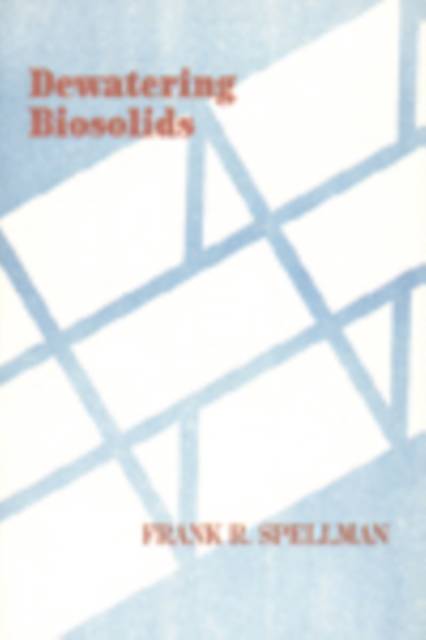
- Retrait gratuit dans votre magasin Club
- 7.000.000 titres dans notre catalogue
- Payer en toute sécurité
- Toujours un magasin près de chez vous
- Retrait gratuit dans votre magasin Club
- 7.000.0000 titres dans notre catalogue
- Payer en toute sécurité
- Toujours un magasin près de chez vous
Description
FROM THE PREFACE
The processes used to remove water from biosolids and change their form from a liquid to a damp solid are critical to the operation of other downstream processes in wastewater treatment. An ideal dewatering operation would capture all of the biosolids solids at minimum cost and the resultant dry biosolids solids or cake would be capable of being handled without causing unnecessary problems. Process reliability, ease of operation, and compatibility with the treatment plant environment are also optimum.
This text is designed to provide a detailed look at several dewatering options. It must be pointed out, however, that this text takes a strong, biased view toward centrifugation as the dewatering process that is most reliable, maintenance free, cost effective, and capable of producing the highest quality end-product when compared to the other options in a holistic manner.
Therefore, the underlying theme of this text is wrapped around the premise that it is better to centrifuge it!
Having said this, it must also be pointed out that all major biosolids dewatering processes are discussed in this text, in detail. Several examples of actual operating systems are presented, and preventive maintenance and cost considerations are presented and discussed.
In recent years there has been a tendency in some technical texts like this one to focus on the theoretical and laboratory analyses of dewatering operations. While such research and documented findings can lead to improved understanding of the scientific and engineering concepts associated with dewatering biosolids, this text is presented in such a fashion so as to be user-friendly. It is an operator's text that can also afford the decision-maker the opportunity to make informed choices about selecting a dewatering system for his/her plant use.
Dewatering Biosolids will be of interest to people in all aspects of wastewater plant operation. Useful as a handbook for operators, this plain l
The processes used to remove water from biosolids and change their form from a liquid to a damp solid are critical to the operation of other downstream processes in wastewater treatment. An ideal dewatering operation would capture all of the biosolids solids at minimum cost and the resultant dry biosolids solids or cake would be capable of being handled without causing unnecessary problems. Process reliability, ease of operation, and compatibility with the treatment plant environment are also optimum.
This text is designed to provide a detailed look at several dewatering options. It must be pointed out, however, that this text takes a strong, biased view toward centrifugation as the dewatering process that is most reliable, maintenance free, cost effective, and capable of producing the highest quality end-product when compared to the other options in a holistic manner.
Therefore, the underlying theme of this text is wrapped around the premise that it is better to centrifuge it!
Having said this, it must also be pointed out that all major biosolids dewatering processes are discussed in this text, in detail. Several examples of actual operating systems are presented, and preventive maintenance and cost considerations are presented and discussed.
In recent years there has been a tendency in some technical texts like this one to focus on the theoretical and laboratory analyses of dewatering operations. While such research and documented findings can lead to improved understanding of the scientific and engineering concepts associated with dewatering biosolids, this text is presented in such a fashion so as to be user-friendly. It is an operator's text that can also afford the decision-maker the opportunity to make informed choices about selecting a dewatering system for his/her plant use.
Dewatering Biosolids will be of interest to people in all aspects of wastewater plant operation. Useful as a handbook for operators, this plain l
Spécifications
Parties prenantes
- Auteur(s) :
- Editeur:
Contenu
- Nombre de pages :
- 276
- Langue:
- Anglais
Caractéristiques
- EAN:
- 9781566764834
- Date de parution :
- 15-01-97
- Format:
- Livre relié
- Format numérique:
- Genaaid
- Dimensions :
- 149 mm x 234 mm
- Poids :
- 467 g

Les avis
Nous publions uniquement les avis qui respectent les conditions requises. Consultez nos conditions pour les avis.






